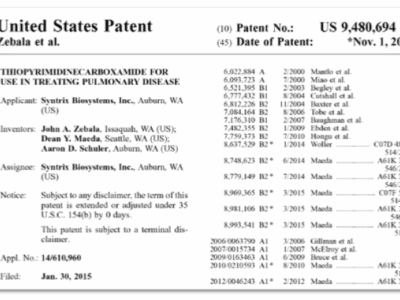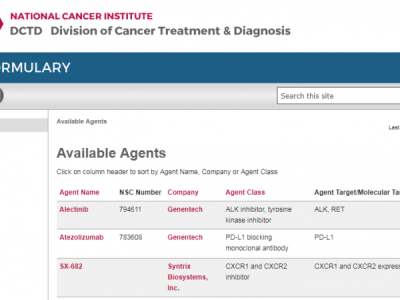Study successfully met its endpoints and provides basis for pivotal Phase 3 trial
AUBURN, WASHINGTON — Syntrix Pharmaceuticals today announced the publication of positive results from two consecutive randomized and double-blind controlled trials that compared desmetramadol to placebo and tramadol. The results, published in The Journal of Pain showed that desmetramadol has the same analgesic and side effect profile of tramadol, but without tramadol’s known metabolic liabilities that hamper its efficacy and safety.
With over 40 million prescriptions per year, tramadol is immensely popular in the United States where it is used as a less-abused and safer alternative to Schedule II opioids. However, tramadol suffers from requiring metabolic activation in the body to the active M1 metabolite in order for it to work. Up to half of patients cannot optimally metabolize tramadol due to their genetics or interactions with co-prescribed drugs. The FDA tramadol label contains “black box” warnings of these metabolic liabilities and their adverse effects on its efficacy and safety, where patients who are ultra-rapid metabolizers can produce dangerous M1 levels, and poor metabolizers insufficient M1 for analgesia.
Desmetramadol is a patented composition that eliminates the metabolic liabilities of tramadol by delivering the active M1 metabolite directly without the need for metabolic activation.
“These clinical data demonstrate that desmetramadol is a ‘better’ tramadol and could potentially replace tramadol, now the second most prescribed analgesic in the United States” said John Zebala, MD, PhD, President of Syntrix. Zebala added, “In the same way that tramadol is being used as a treatment option to Schedule II narcotics, desmetramadol could displace Schedule II narcotics altogether for many patients.”
The study reported in The Journal of Pain describes two consecutive double-blind, randomized, placebo-controlled, three segment cross-over trials A and B that investigated the steady-state pharmacokinetics and analgesia of desmetramadol (20 mg) and tramadol (50 mg) in 103 healthy participants without (n = 43) and with (n = 60) cotreatment with a potent inhibitor of tramadol’s metabolism to M1. In the absence of inhibition (trial A), desmetramadol and tramadol dosed every 6 hours gave equivalent M1 blood levels, similar side effects, and analgesia significantly greater than placebo, but equal to each other. In trial B, metabolic inhibition significantly depressed tramadol steady-state M1 and led to insignificant analgesia comparable to placebo. In contrast, metabolic inhibition in trial B had no deleterious effect on desmetramadol M1, which gave significant analgesia as in trial A and superior to tramadol (P = .003). Support for the trial was from the National Institute on Drug Abuse (NIDA).
ABOUT DESMETRAMADOL: Desmetramadol promises to provide a critically needed improvement to both tramadol (Schedule IV) and the more dangerous and abuse-prone Schedule II narcotics now at the center of the U.S. Opioid Crisis. Desmetramadol is the racemic active metabolite of tramadol that delivers a mu-opioid receptor agonist and an inhibitor of norepinephrine reuptake. The combined activities provide synergistic pain relief. Desmetramadol is poised to enter Phase 3 testing in acute pain.
ABOUT SYNTRIX: Syntrix is a pharmaceutical company committed to discovering and delivering innovative therapies to solve the most difficult clinical problems. Convergent Science & Strategy. Breakthrough Medicines.
DISCLOSURE NOTICE: This release contains forward-looking information that is based on company management’s current beliefs and expectations and are subject to currently unknown information, risks and circumstances. Actual results may vary from what is projected. Syntrix does not undertake any obligation to publicly update these forward-looking statements, whether as a result of new information, future events or otherwise.
Media Contact: Aaron Schuler, PhD, 253-833-8009, x21
The company issued a press release.



